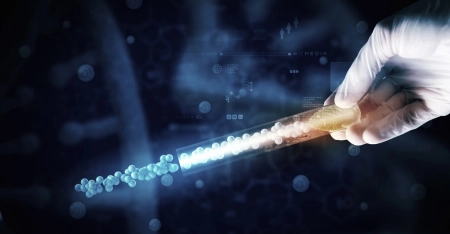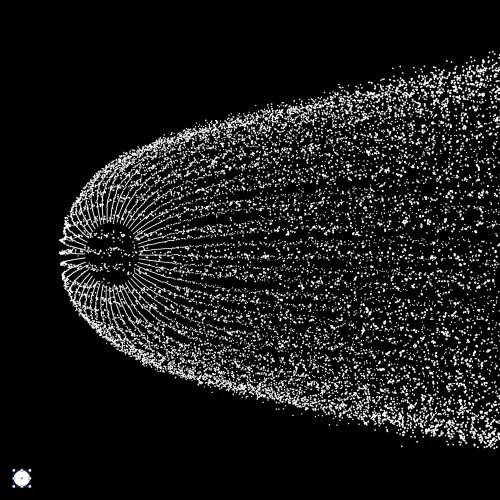
One of the most important concepts in thermodynamics is that of state functions , which describe the state of a system in terms of macroscopic variables.
These functions do not depend on how the system reached its current state, but only on the state itself.
Next, we'll explore in depth what state functions are, their importance, and the main functions used in thermodynamics, such as internal energy, enthalpy, entropy, and Gibbs free energy.
Definition of state function
 We define state function as any macroscopic property or variable of a system that depends only on the system's current state, without regard to the path or process by which that state was reached.
We define state function as any macroscopic property or variable of a system that depends only on the system's current state, without regard to the path or process by which that state was reached.
This implies that if the initial and final states of a system are known, changes in the state functions can be determined simply by comparing the two states, regardless of how the transformation occurred.
For example, if a gas in a container goes from state A to state B, the state functions depend only on the values of the macroscopic variables (such as pressure, volume, and temperature) in states A and B.
It doesn't matter whether the gas expanded quickly or slowly, or whether it was heated first and then expanded; the change in state functions will be the same.
Some of the most important state functions in thermodynamics are internal energy (U), enthalpy (H), entropy (S), and free energies, such as the Helmholtz free energy (A) and the Gibbs free energy (G).
Differences between state functions and process functions
 It is important to differentiate state functions from process functions. While state functions depend only on the initial and final states, process functions depend on the path or process the system takes to get from one state to another.
It is important to differentiate state functions from process functions. While state functions depend only on the initial and final states, process functions depend on the path or process the system takes to get from one state to another.
Examples of process functions are work and heat since their value varies depending on how the transformation between states is carried out.
For example, in the case of mechanical work done by an expanding gas, the value of the work depends on the process, that is, whether the expansion is isobaric (at constant pressure), isothermal (at constant temperature), or adiabatic (without heat exchange).
Main state functions in thermodynamics
Internal energy (U)
Internal energy is the sum of all the kinetic and potential energies of the molecules that make up a system. For an ideal gas, internal energy is related only to the kinetic energy of the molecules due to their thermal motion, while in more complex systems, it also includes molecular interactions, vibrational energies, rotational energies, etc.
In a closed system where only heat and work are exchanged with the surroundings, the change in internal energy, ΔU, can be expressed by the first law of thermodynamics:
\[
\Delta U = Q - W
\]
Where Q is the heat added to the system and W is the work done by the system. Internal energy is a state function because it depends only on the current state of the system (pressure, volume, temperature), and not on the specific process that brought the system to that state.
Enthalpy (H)
Enthalpy is another very important state function, defined as:
\[ H=U+PV \]
Where P is the system pressure and V is the volume. Enthalpy is useful when dealing with processes that occur at constant pressure, such as chemical reactions in open vessels. Under such conditions, the change in enthalpy, ΔH, represents the heat absorbed or released by the system.
For example, when an exothermic reaction occurs in a constant-pressure environment, the heat released equals the decrease in the system's enthalpy. In contrast, in an endothermic reaction, the heat absorbed corresponds to an increase in enthalpy.
Entropy (S)
 Entropy is a state function that measures the degree of disorder or randomness in a system. It is often associated with the Second Law of Thermodynamics, which states that in any natural process, the total entropy of the universe tends to increase.
Entropy is a state function that measures the degree of disorder or randomness in a system. It is often associated with the Second Law of Thermodynamics, which states that in any natural process, the total entropy of the universe tends to increase.
Entropy is defined in terms of the heat exchanged in a reversible process and the temperature at which the process occurs:
\[
\Delta S = \frac{Q_{\text{rev}}}{T}
\]
Where \( Q_{\text{rev}} \) is the heat exchanged in a reversible process and \(T \) is the temperature at which the heat exchange occurs. If the system evolves towards greater disorder (such as the expansion of a gas into a larger volume), the entropy increases.
Entropy is a state function because its value depends only on the current state of the system, not on the path taken to reach it.
The importance of entropy lies in the fact that it not only determines the direction in which natural processes occur, but also sets limits on the amount of useful work that can be extracted from a system. In an irreversible adiabatic process, for example, entropy increases, meaning that some useful energy is degraded.
Helmholtz free energy (A)
The Helmholtz free energy is defined as:
\[ A=U−TS \]
Where \( T \) is the temperature of the system and \( S \) is its entropy. The Helmholtz free energy is particularly useful in closed systems that are at a constant temperature and that exchange heat with the surroundings.
The criterion for the spontaneity of a process at constant temperature and volume is a decrease in the Helmholtz free energy. In other words, for a process to be spontaneous, the Helmholtz free energy must decrease, which implies a greater tendency toward stability.
Gibbs free energy (G)
The Gibbs free energy is a state function that combines the enthalpy, entropy, and temperature of the system:
\[ G=H−TS=U+PV−TS \]
Gibbs free energy is extremely important in systems at constant pressure and temperature, such as in most biological and chemical processes occurring on Earth. The change in Gibbs free energy, \Delta G \, determines whether a reaction or process is spontaneous.
If \( \Delta G \) is negative, the process occurs spontaneously. If \( \Delta G \) is positive, the process is not spontaneous and will require an external energy input to carry out.
Gibbs free energy is also crucial for understanding chemical equilibrium. Under equilibrium conditions, \( \Delta G \) is equal to zero, meaning there is no net tendency for changes to occur in the system. Chemical reactions tend to proceed in the direction in which the Gibbs free energy decreases, and equilibrium is reached when \( \Delta G=0 \).
Importance of state functions
 State functions allow us to fully describe the thermodynamic state of a system. Since they are process-independent, they provide a powerful tool for analyzing changes in complex systems without having to study every intermediate step.
State functions allow us to fully describe the thermodynamic state of a system. Since they are process-independent, they provide a powerful tool for analyzing changes in complex systems without having to study every intermediate step.
These functions are also essential in the analysis of the efficiency of thermal machines, such as motors and refrigerators.
For example, in a Carnot cycle, which is an ideal thermodynamic cycle that represents the maximum efficiency limit for a heat engine, state functions allow the theoretical efficiency of the cycle to be determined by calculating changes in internal energy, entropy, and other properties.
In engineering, state functions such as enthalpy and Gibbs free energy are fundamental to the design of energy exchange processes, such as in power plants and refrigeration systems, as well as to the analysis of chemical reactions in terms of heat released or absorbed.
Relationships between state functions
State functions are not independent of one another, and there are numerous relationships between them. For example, from the fundamental equations of thermodynamics, one can obtain auxiliary equations such as Maxwell's equations, which are a set of relationships connecting variables such as entropy, temperature, volume, and pressure.
Furthermore, knowledge of one state function can provide information about others. For example, knowing the Gibbs free energy of a system makes it possible to deduce entropy, heat exchange, and other aspects related to the spontaneity of processes.
These interrelationships make state functions key tools for solving complex thermodynamic problems.